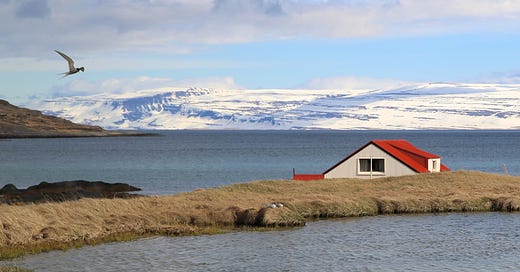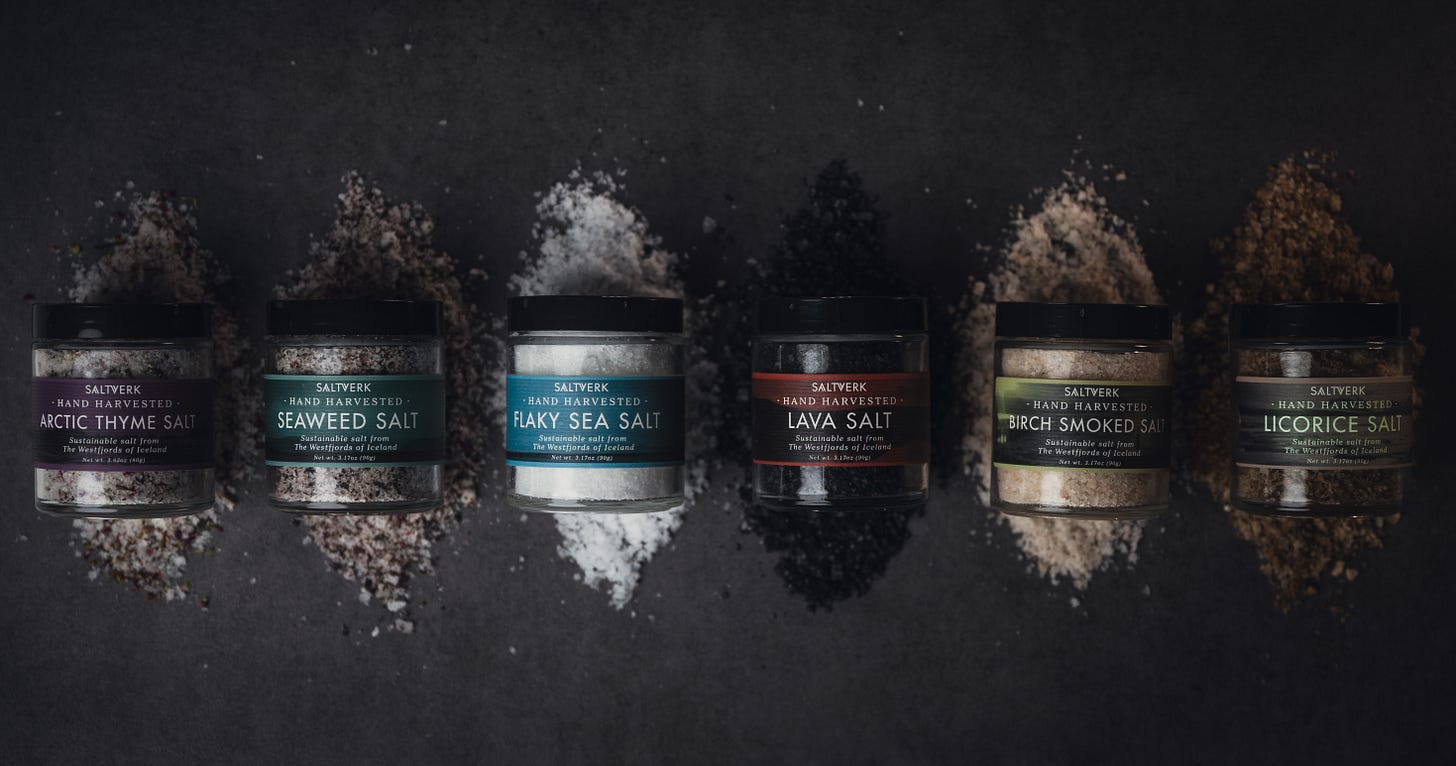From Geothermal Energy to Flaky Sea Salt: The Innovative Story of Saltverk
Conversation with Gisli Grimsson, Saltmaker at Saltverk
In the remote northwestern fjords of Iceland, where geothermal energy meets the North Atlantic, Saltverk has pioneered a sustainable approach to salt-making that's as innovative as it is traditional. I recently had the pleasure of speaking with Gísli Grímsson, who joined Saltverk in 2016 as employee number five and now manages production evolution for this remarkable Icelandic salt brand.
A Startup Born from Curiosity
Saltverk's story begins in 2011, during Iceland's recovery from the global financial crisis. Gísli tells me, "Right after the housing bubble of 2008, which rocked the economies of the world, Iceland was quite fast recovering. That created grounds for a lot of startups and new ideas while people were trying to figure out what was next."
One of those ideas came from Björn, Saltverk's founder, who was working as a business engineer for IBM in Copenhagen. "He felt miserable," Gísli explains, "just delivering Excel sheets from one person to the next and wanted to make something that was a physical product."
The idea moment happened during a casual coffee conversation when someone asked: Why wasn't anyone producing sea salt in Iceland? The question made perfect sense given Iceland's position in the middle of the North Atlantic, with minimal pollution and abundant renewable energy sources. A place known for its high-minerial wellness rousouces, but no one was capurting the culinary side of this resource.
Finding the Perfect Location
The team's research led them to Reykjanes in Northwest Iceland – the name translates to "smoky peninsula" or "smoky bay" due to its geothermal activity.
"It's located in the middle of nowhere," Gísli describes. "The only thing in the close vicinity is an old boarding school, which is basically a hotel during summertime but abandoned during wintertime. There's a geothermal well there giving huge amounts of energy – around 20 liters per second of water that's almost at boiling point."
This energy source had been untapped for centuries, simply flowing down the beach into the sea. It was too remote to use for infrastructure, making it perfect for Saltverk's vision: using geothermal energy to distill seawater into salt.
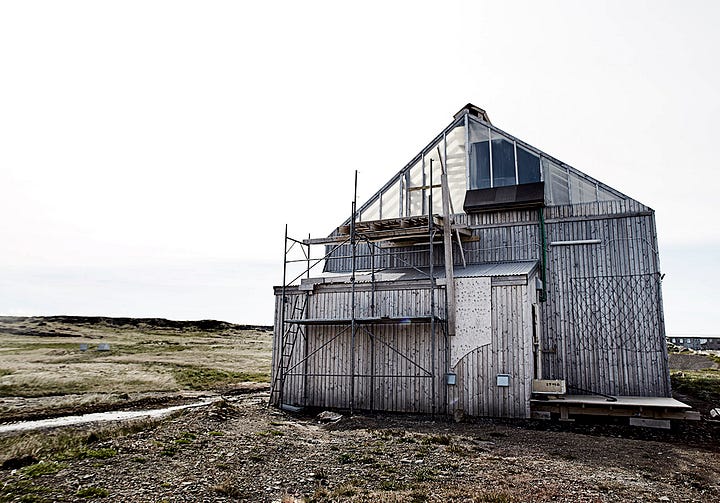
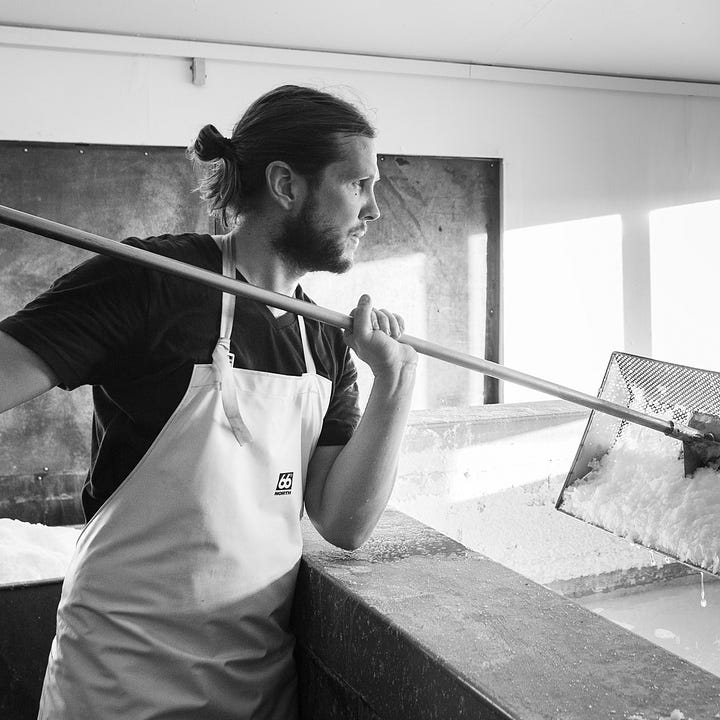
A Factory Built on Innovation
When I asked about the production process today, Gísli described a fascinating system that combines engineering ingenuity with natural processes.
"Our salt factory in the Westfjords has been built on an idea upon an idea upon an idea on how to grow and scale because this is something that hadn't been done before – using geothermal energy to make sea salt."
Unlike traditional salt-making operations that use solar evaporation with seasonal harvests, Saltverk harvests salt twice daily, every day of the year. This continuous production is possible because of their unique approach to managing the evaporation process. It also allows for smaller batches and more delicate treatment of the grains.
The production begins with pumping seawater from 15-20 meters depth to ensure consistent salinity of about 3.5%. After filtration (down to 10 microns to preserve essential minerals), the water passes through a reverse osmosis machine that serves a dual purpose: concentrating the brine while creating fresh water for facility operations.
"In this peninsula, because it's so flat, there is limited access to freshwater," Gísli explains. "So we are gaining on both sides – producing some freshwater using reverse osmosis technology, and then on the other end, we have a higher salinity brine."
The concentrated brine moves to a pre-distillation tank – repurposed from an abandoned fish farm that failed dramatically in the 1980s. This tank features six compartments with progressively higher salinity levels, heated by massive geothermal radiators.
From there, the brine goes to open-faced salt pans where crystallization occurs. "All the salt that we produce is hand-harvested," Gísli emphasizes. This provides both quality control and a gentle touch to the crystals.
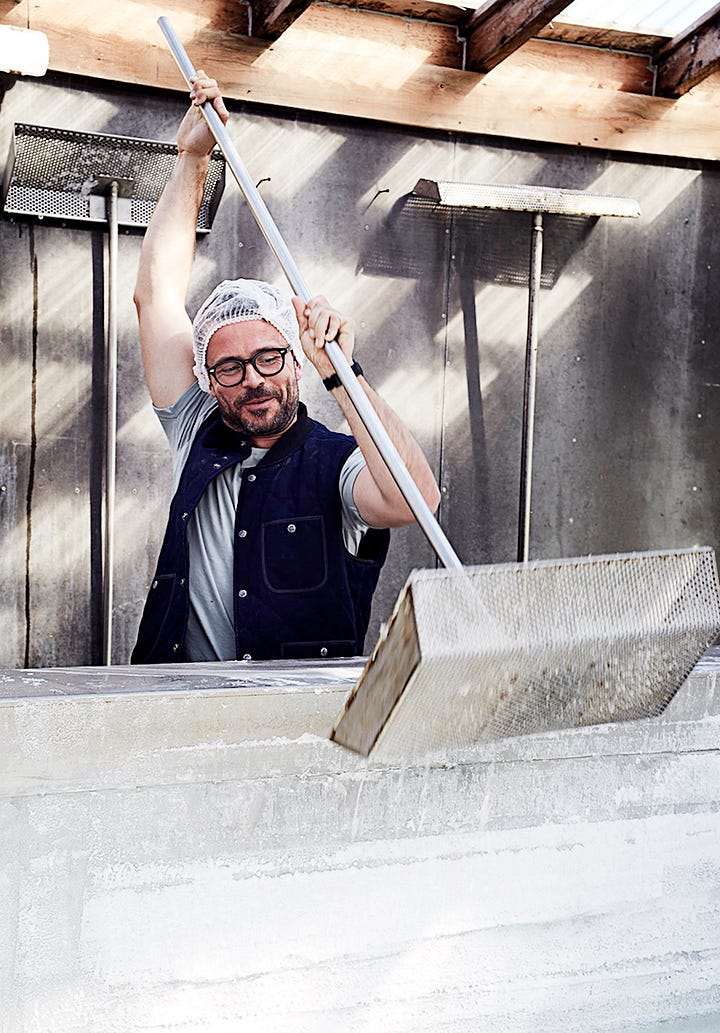
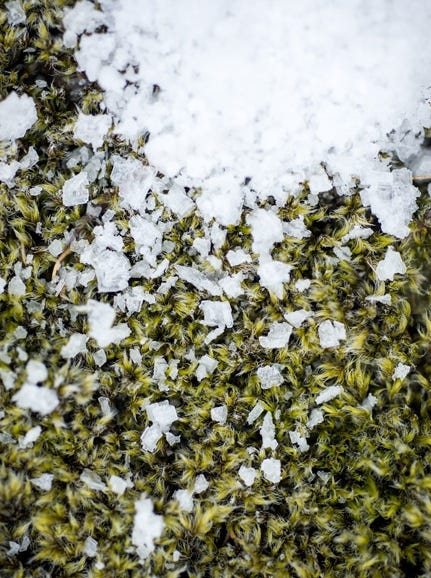
Preserving the Perfect Flake
One of Saltverk's distinguishing features is its beautiful salt flakes, which remain intact even in their infused varieties. When I asked how they maintain this quality, Gísli explained:
"Throughout this process, some of the crystals fall from the pan and break down. They're put in the draining bin, they break again. This would be a lot more harsh if all of this process would be automated or machinerized."
For their flavored salts, like lava salt and licorice salt (my personal favorite to share in tastings), they use a tumble blender that rotates very slowly to mix in the ingredients. "We try to take great care to keep the flakes as natural as possible," Gísli says.
A Museum of Experimentation
What struck me most about Saltverk's operation is its experimental approach. When I suggested their facility must look like a museum of salt-making attempts, Gísli laughed in agreement:
"For every hundred ideas that we tried, maybe one of them worked out. So we have about five really good ideas that are working really well. But besides that, there are like hundreds that are gathering dust, but they are still there from a trial phase."
This hands-on approach was necessary because, as Gísli points out, "You cannot go on the internet and buy a salt machine that uses geothermal energy to crystallize seawater. All of this had to be innovated. The process is known, but the utilities we are using and this technique is something that we have had to build and design by ourselves."
Flavors of Iceland
Beyond the pure flaky sea salt, Saltverk offers several infused varieties that showcase Icelandic flavors. Gísli's personal favorite is the birch smoked salt, which I've found to be remarkably subtle compared to other smoked salts. I love it in my coffee or on eggs or avocado toast.
Gísli also recommends their seaweed salt for cooking rather than finishing: "I love to use it for searing or pan frying because the salt with the seaweed gives it the extra umami punch."
Chef Partnerships
Like many artisan producers, Saltverk has found ambassadors in professional chefs.
“Most people do not understand the difference between salt and salt," Gísli explains. But chefs do, or want to learn.
Salt is just like any other ingredient, and if you care about the sourcing of your produce, why not care about your salt production?
These relationships have led to Saltverk being used in restaurants like Noma in Copenhagen and AnajaK Thai Cuisine in Los Angeles, led by Justin Pierunski, one of Food & Wine's most up-and-coming chefs.
A Dash Of Reflection
As I continue my journey of sharing artisanal salts through A Dash Of, conversations like this one with Gísli reinforce why I'm so passionate about connecting consumers with the makers behind our essential ingredients. Salt may be a necessity that people seek out regardless of brand, but understanding the innovation, care, and sustainability behind products like Saltverk's transforms this everyday ingredient into something truly special. I’m ready for a field trip to Iceland for sure.
In a world where many food products lack an authentic connection to their makers, Saltverk represents something we care about immensely: a brand built on genuine passion, environmental stewardship, and a commitment to quality.
Visit A Dash Of to shop Saltverk's Icelandic salt and other artisanal salts from around the world. We believe in telling the stories of the makers behind the products we carry, so you know exactly where your food comes from and what makes it special.


